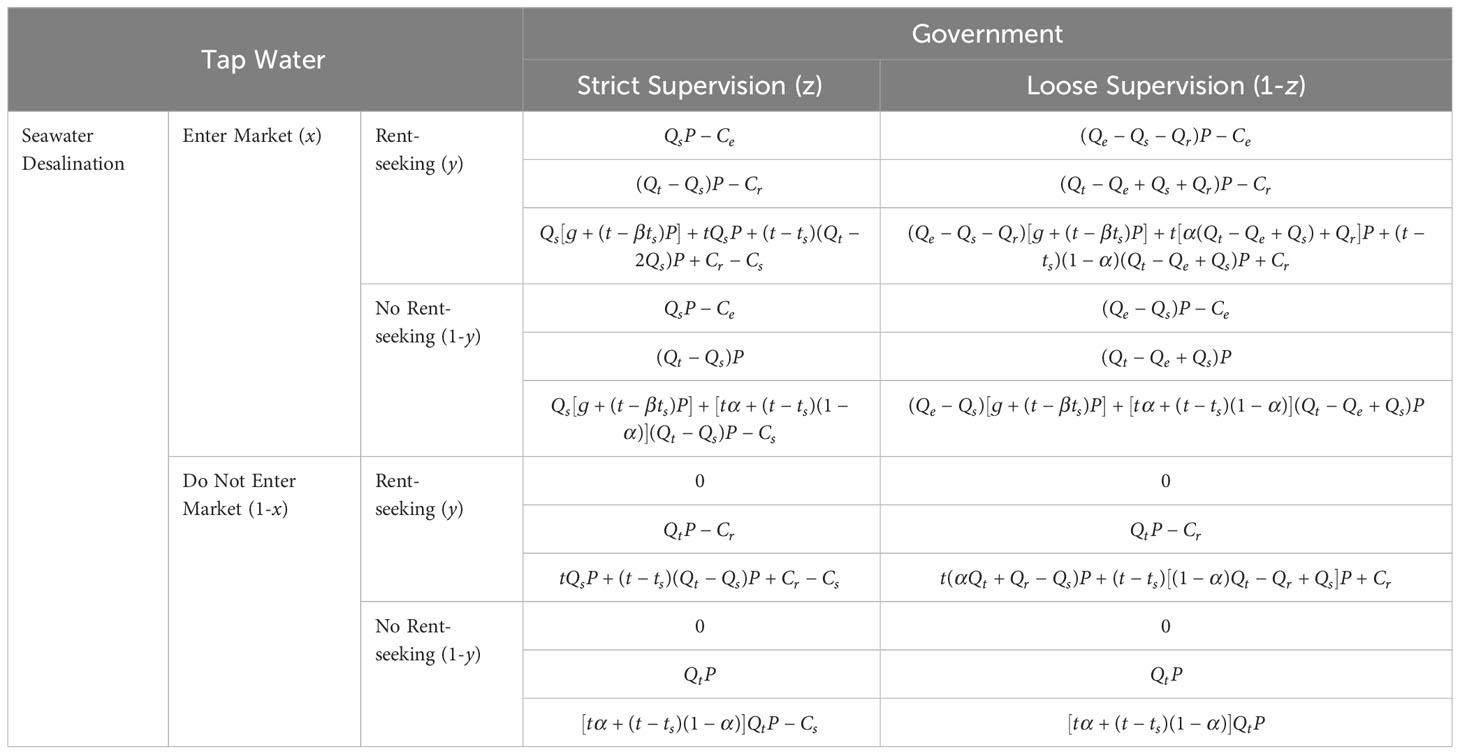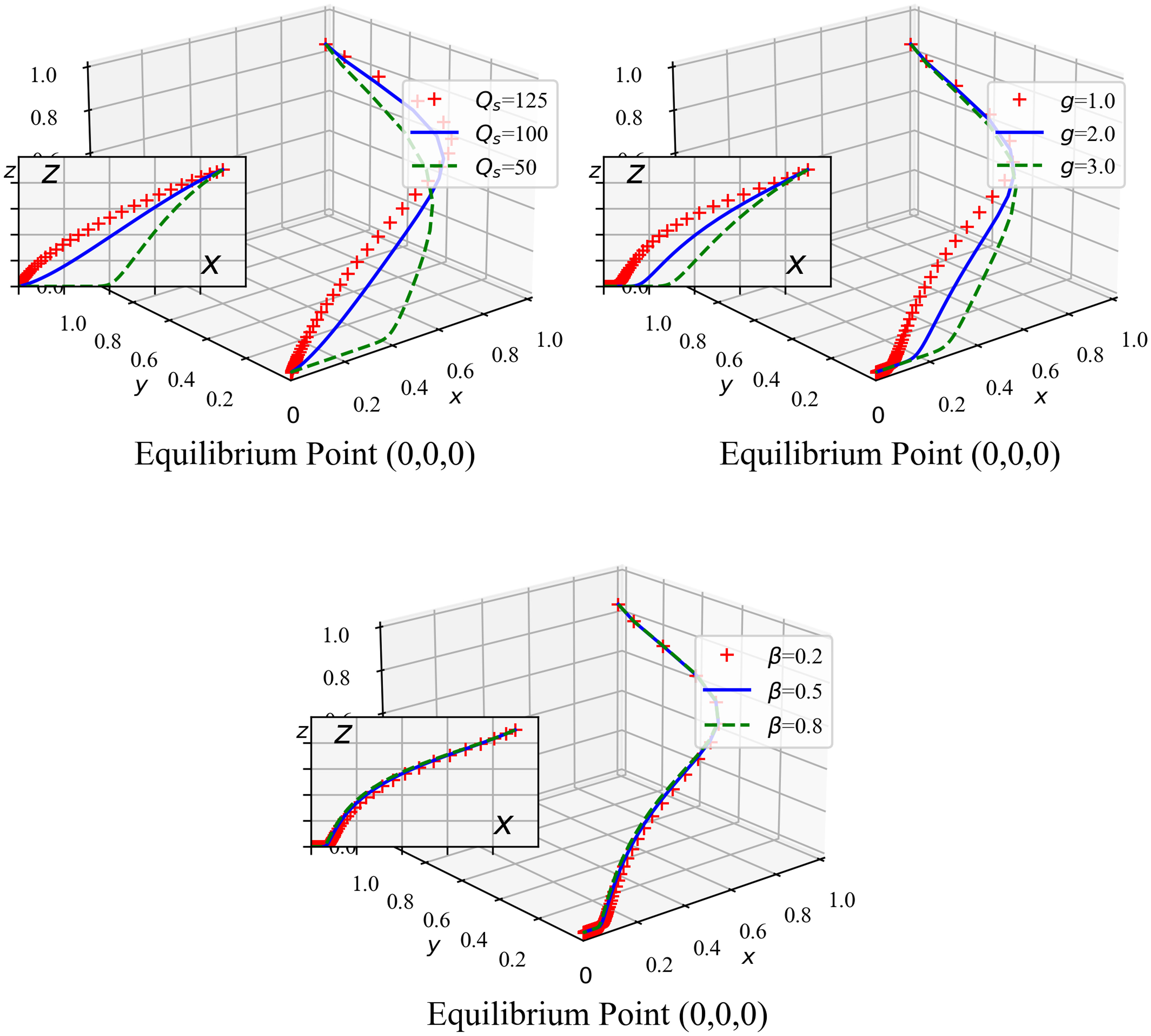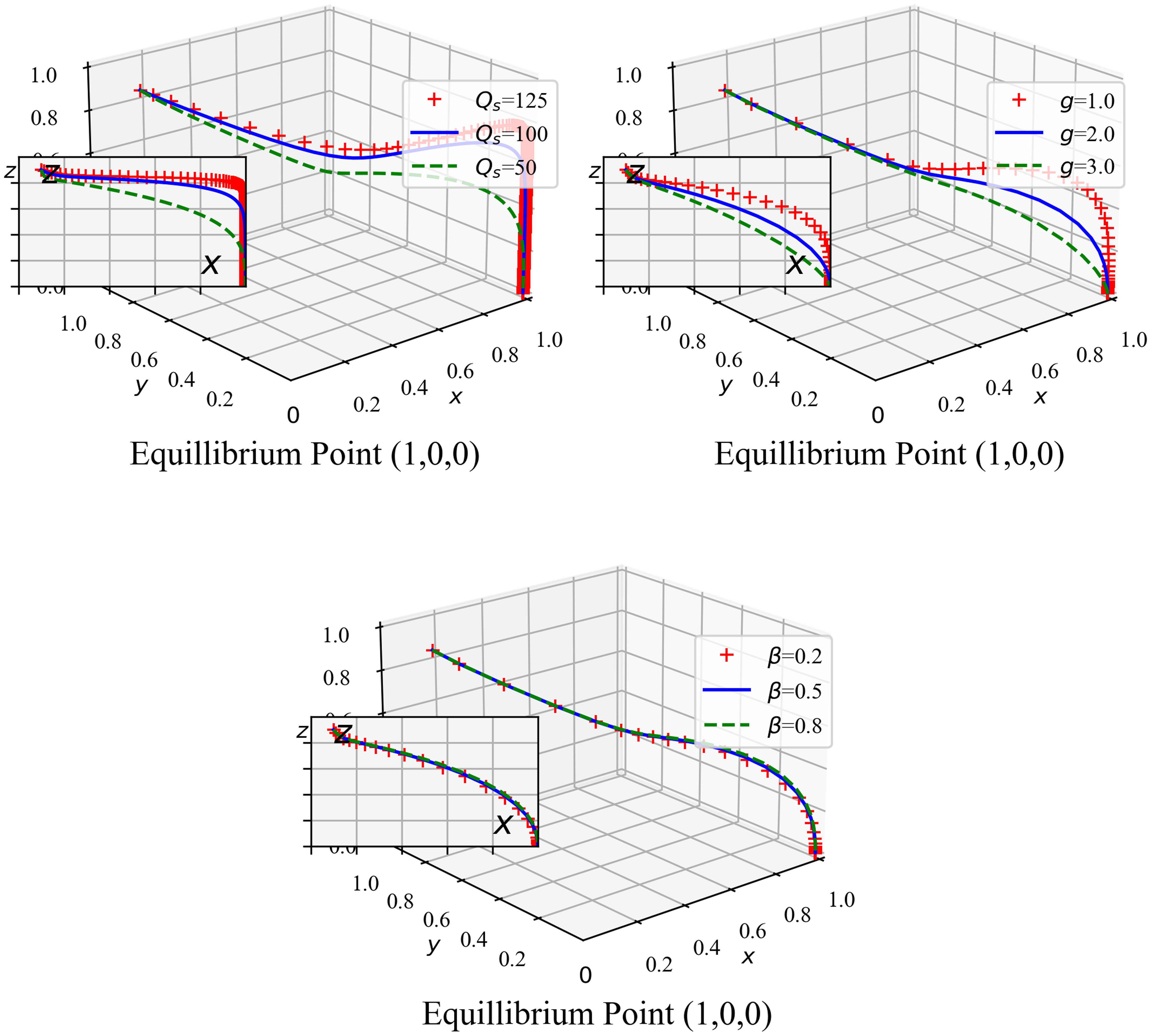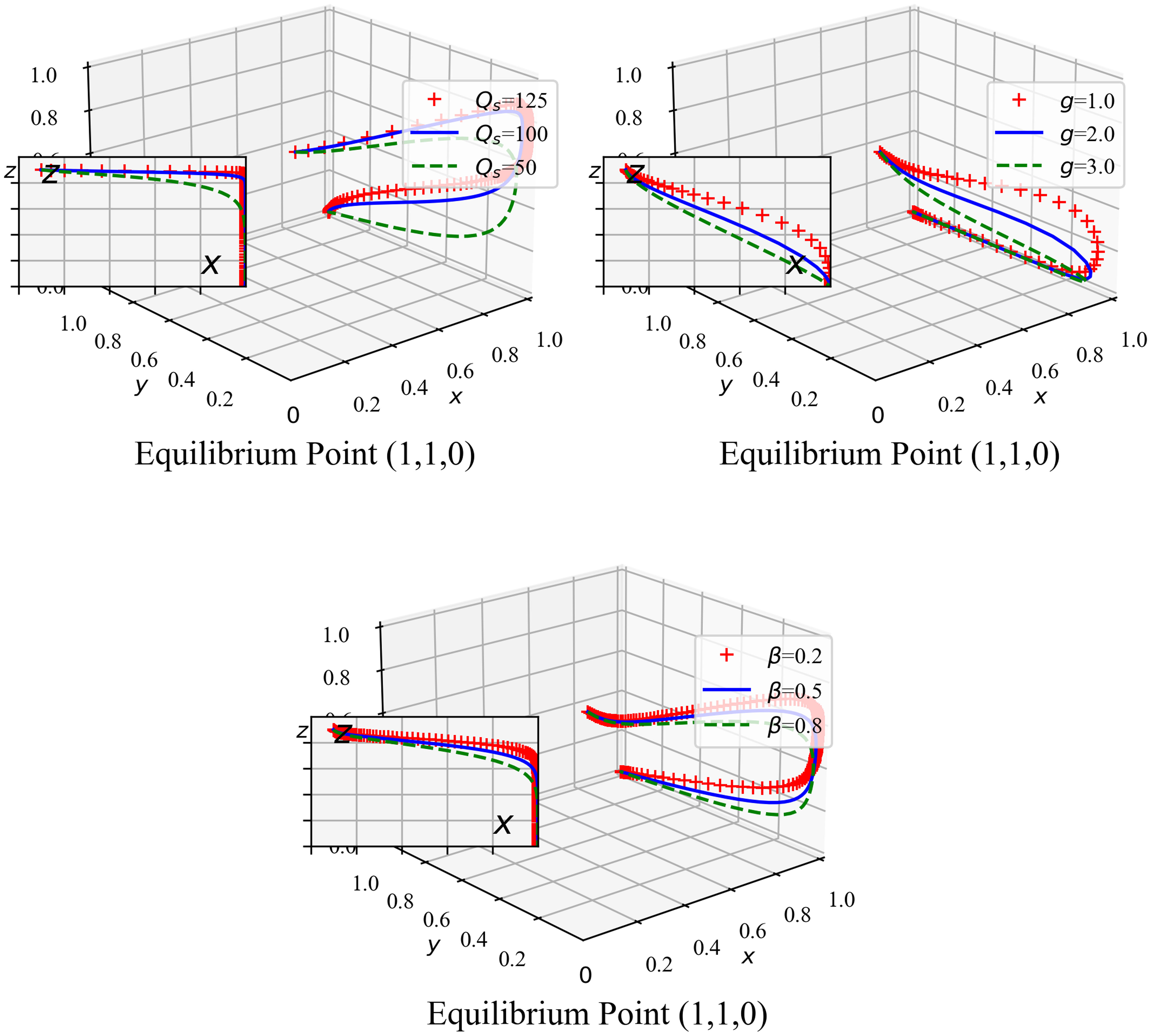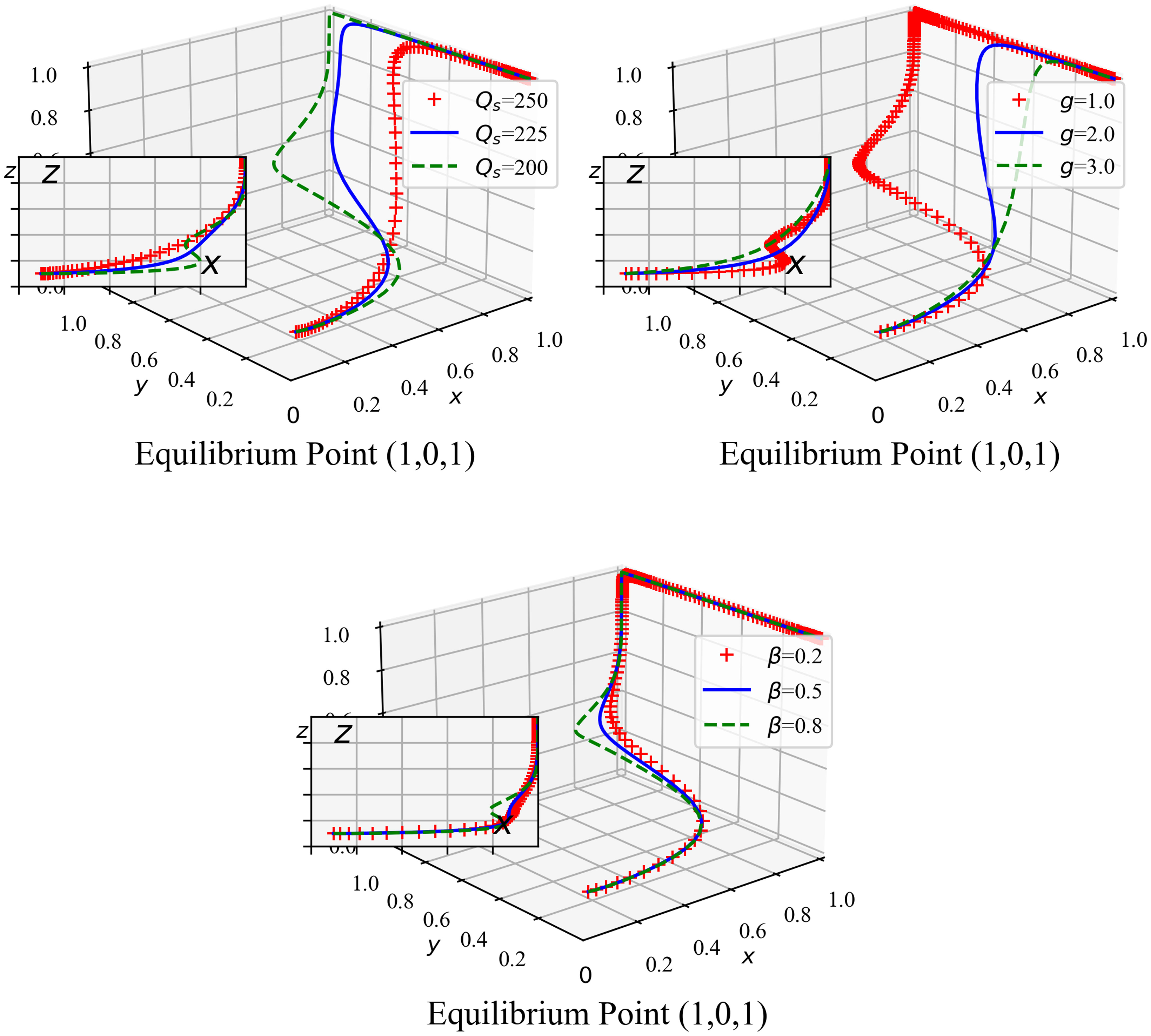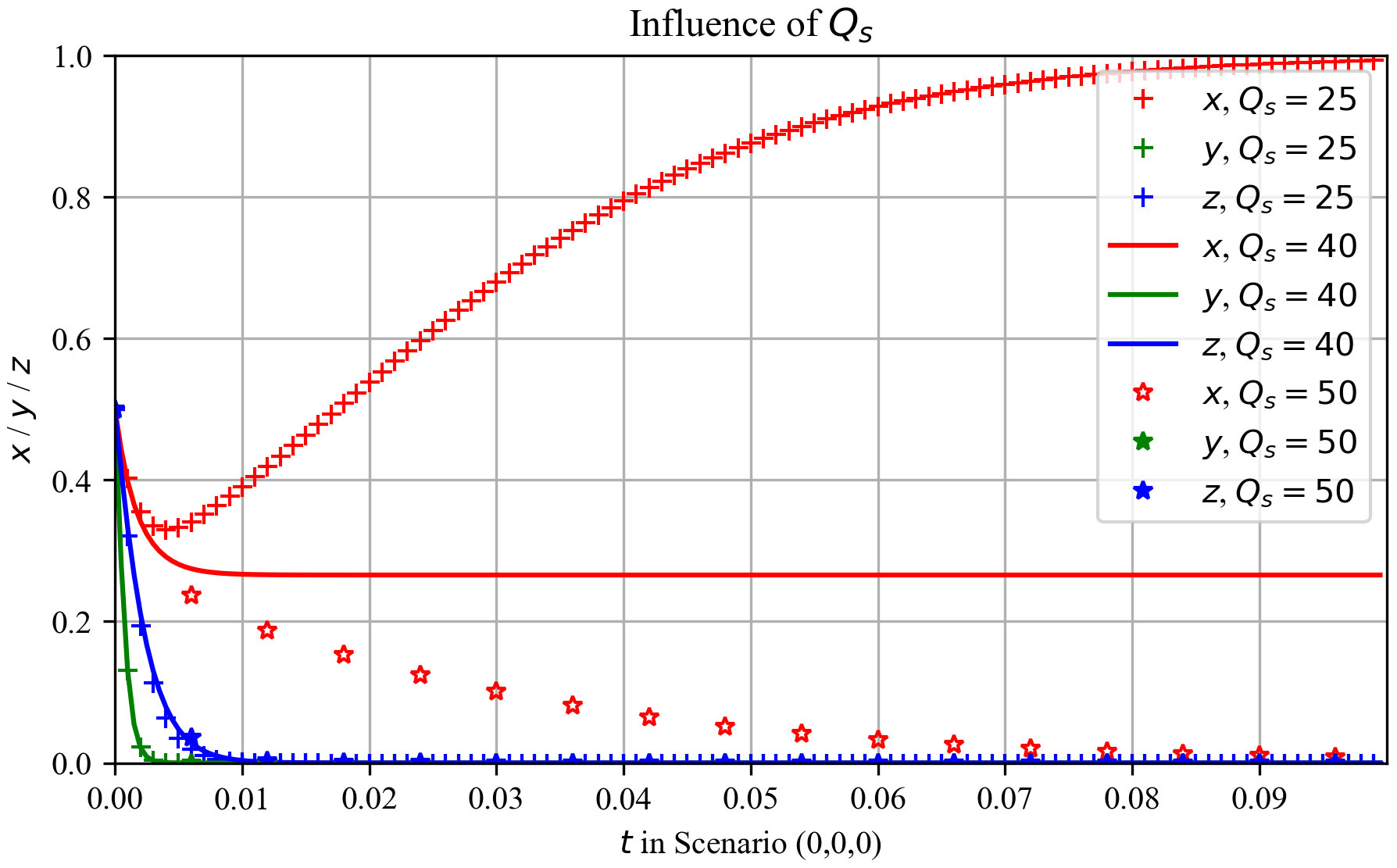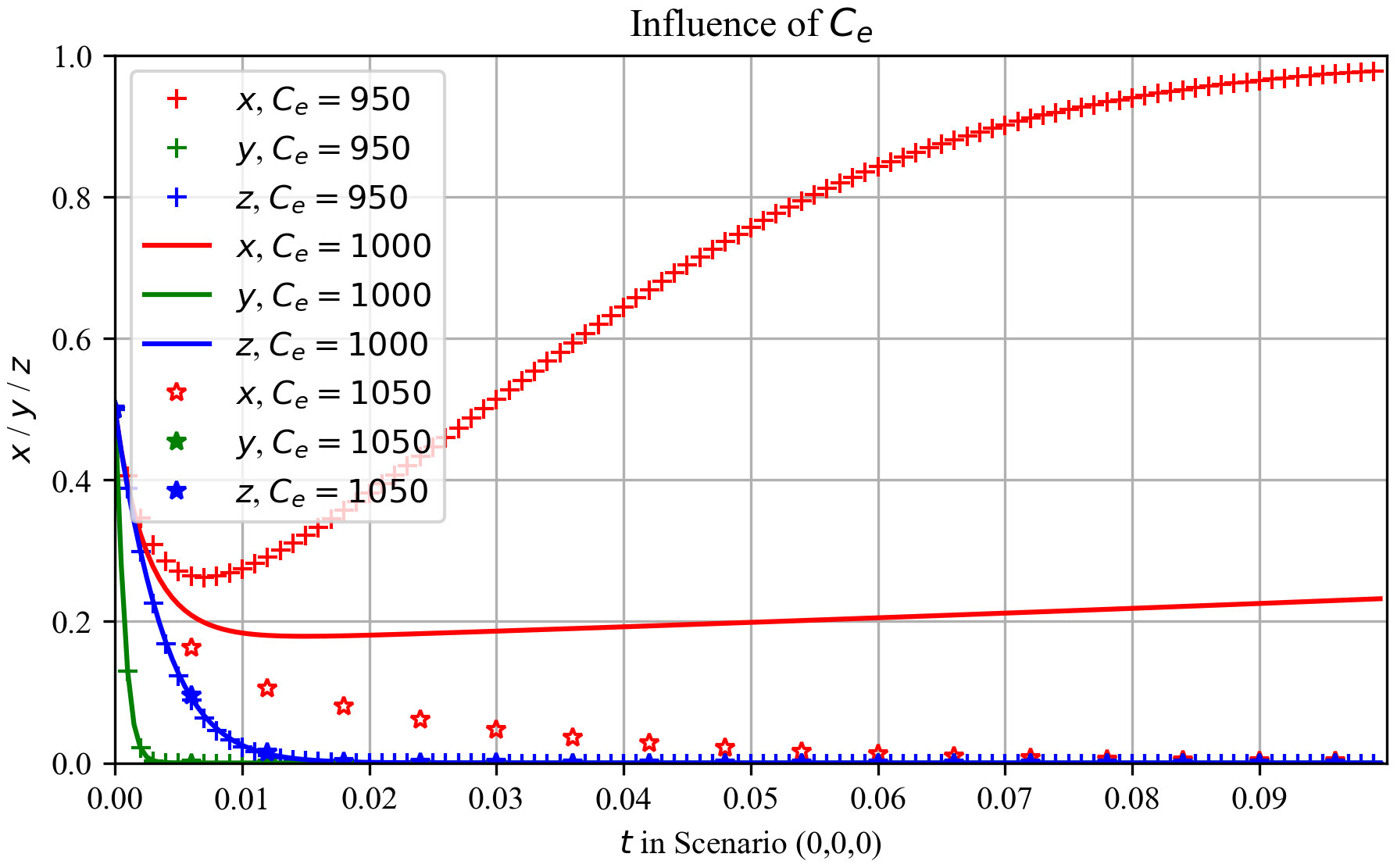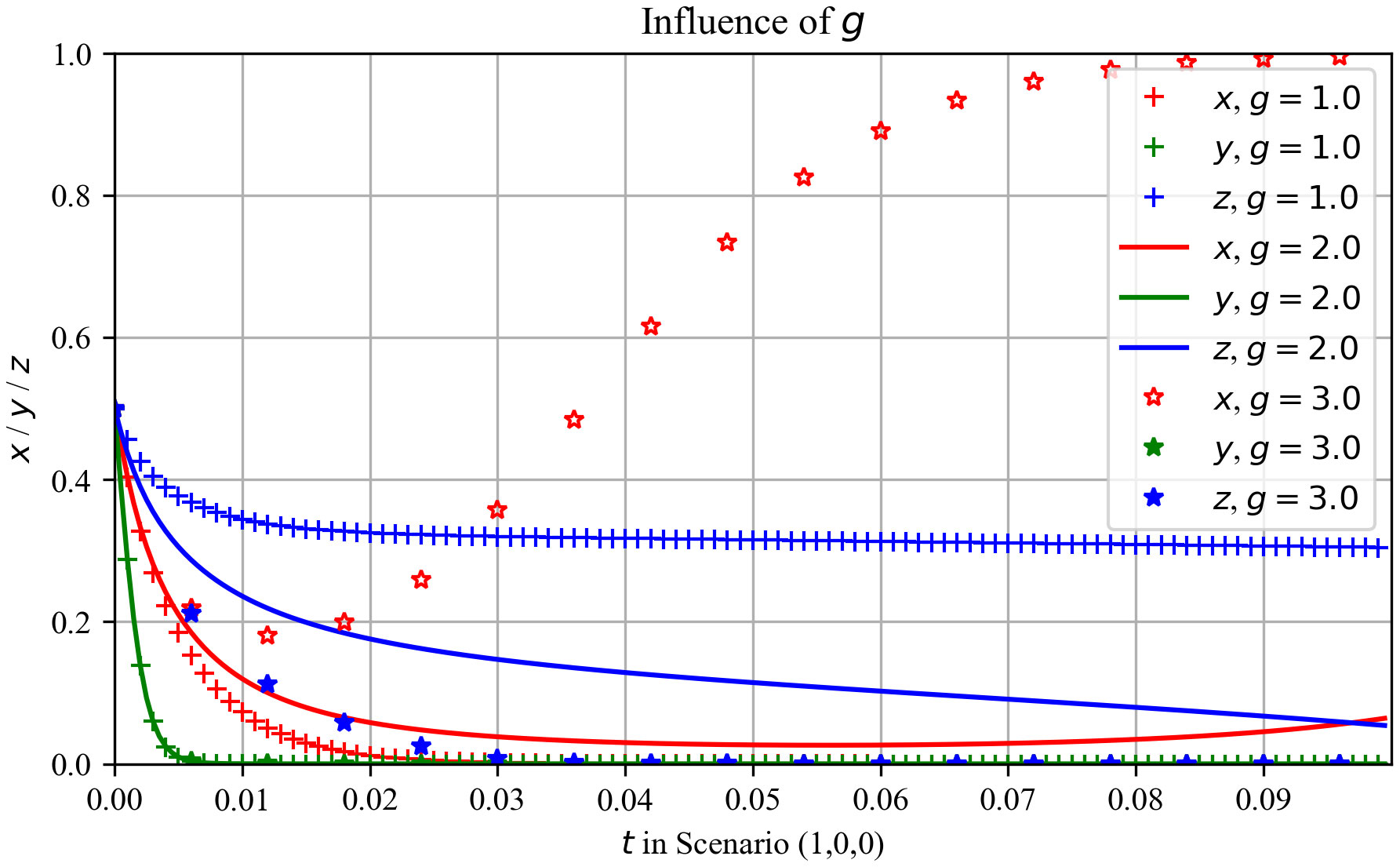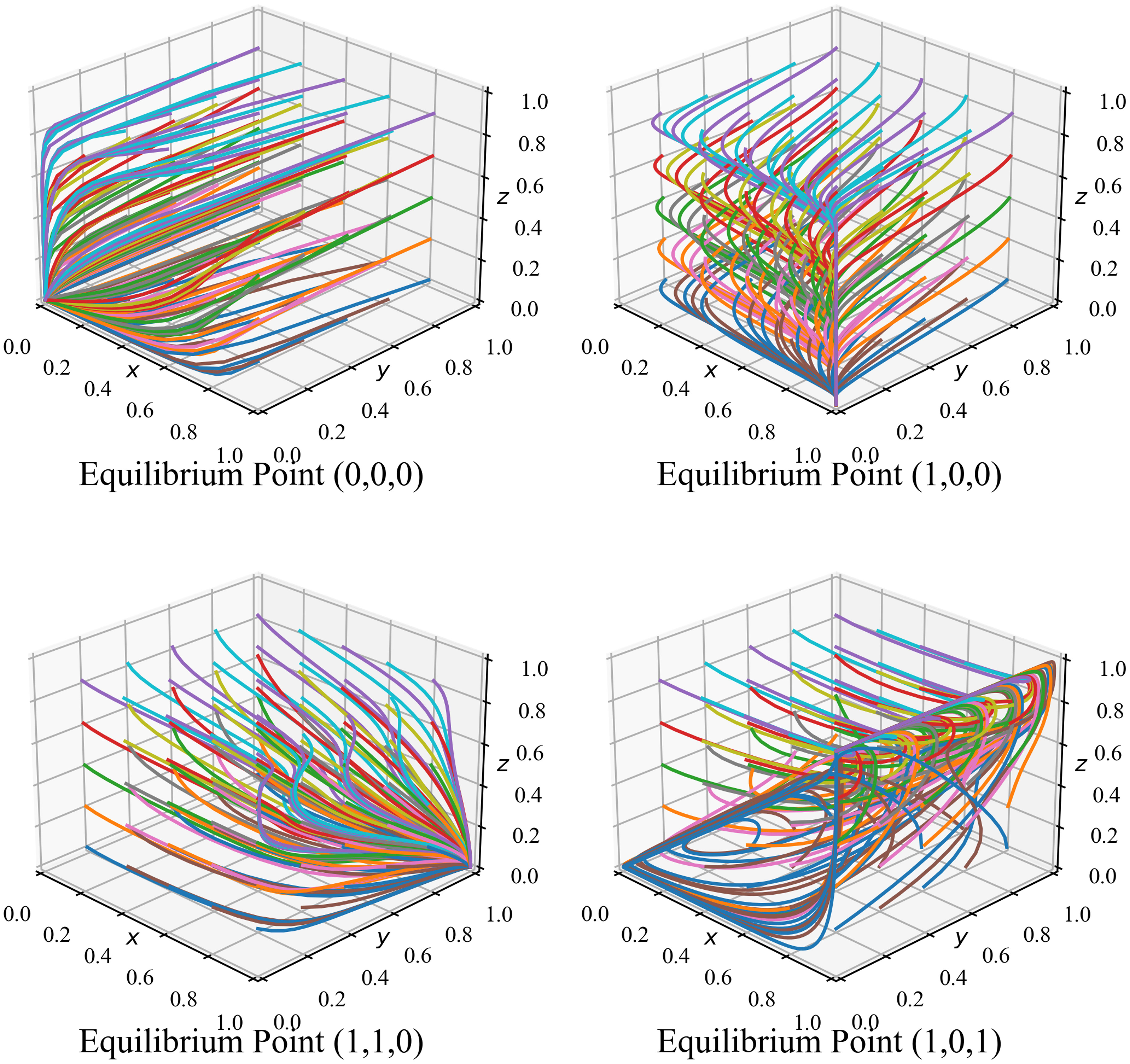- 1Center of Marine Development, Macau University of Science and Technology, Macau, Macau SAR, China
- 2Marine Research Center, Southern Marine Science and Engineering Guangdong Laboratory, Zhuhai, China
- 3Marine Development Research Institute, Ocean University of China, Qingdao, China
- 4The Institute of Sustainable Development, Macau University of Science and Technology, Macau, Macau SAR, China
Seawater desalination is a new promising marine industry and an important way to supplement the shortage of land water resources and promote the efficient use of seawater resources. Currently, the global desalination industry is rapidly developing. In China’s new development plan, large-scale development of the seawater desalination industry is also an important strategic goal. However, compared to the technological development of the seawater desalination industry, its marketization is affected by various factors, and its development level is still relatively low. Therefore, based on real industry data, this paper constructs a tripartite evolutionary game model for seawater desalination enterprises, water supply enterprises, and the government, and identifies several entry barriers for seawater desalination in China. The results include: (1) For seawater desalination to enter the market in China, government supervision limit should be no greater than 400,000 tons per day, about 13.8% of total seawater desalination scale. (2) The entry cost should be no more than 10 million yuan per day for seawater desalination, which is equivalent to approximately 18.25 trillion yuan during a five-year period. Finally, (3) political relatedness should be at least 2.0 for seawater desalination to take place, and 3.0 for it to develop in full swing. The paper also discusses the division of state- and foreign-owned water companies and reveals that government subsidies are only effective if foreign-owned companies seek rents. Based on the findings of the study, we propose pertinent policy recommendations including top-level planning, desalinated water infrastructure development, subsidy policy implementation, and public engagement. These recommendations aim to aid the Chinese government in fostering the desalination sector.
1 Introduction
Water is an essential natural resource that plays a critical role in the sustenance and progress of humanity. The sustainable development of the global water environment is currently experiencing significant problems due to the substantial rise in water consumption resulting from the exponential growth of the world’s population and rapid economic development. This scenario is further exacerbated by the escalating issue of water pollution. Presently, a substantial proportion of the global population, approximately 3.6 billion individuals, encounters insufficient water availability for a minimum duration of one month annually. Projections indicate that this figure is anticipated to escalate to over 5 billion individuals by the year 2050 (Boretti and Rosa, 2019). The water deficiency is especially pronounced in populous countries like China. Since the initiation of China’s reform and opening up policies, there has been a notable surge in economic development and population concentration along the coastal regions. Consequently, this has resulted in a heightened demand for water resources. Nevertheless, based on pertinent statistical data, it is evident that China’s average freshwater resources are merely a quarter of the global average (Piao et al., 2010). This scarcity of water is particularly pronounced in over 600 cities across China, where approximately 400 cities face perennial water insufficiency, and 110 cities experience severe water scarcity, resulting in an annual deficit of nearly 6 billion cubic meters (Cheng et al., 2019). The issue of the uneven spatial distribution of water resources has led to a growing discrepancy between the availability of water resources and economic variables, as highlighted by Liu et al. (2010). Hence, it is imperative to provide substantial backing for the sustainable growth of the seawater desalination sector in order to augment the supply of water resources and enhance the overall water supply framework. This endeavor holds considerable importance not only for China but also for other water-scarce countries, as it seeks to overcome the constraints posed by limited water resources, improve the efficiency of energy use and attain economic and social progress of superior quality from marine resources, which are outlined by the Sustainable Development Goals (SDGs) 6,7 and 14 of the 2030 Agenda.
Seawater desalination technology, as a nascent approach to freshwater production, remains relatively unaffected by temporal, spatial, and climatic constraints. The desalinated water generated through well-established techniques exhibits exceptional water quality and ensures a consistent supply. Consequently, this technology presents a viable solution to mitigate the scarcity of freshwater resources in coastal regions and islands. Consequently, China has strategically designated the desalination sector as a national rising industry, implementing a comprehensive strategy as early as the onset of the 21st century. China’s saltwater desalination sector has had substantial advancements over the years, with notable breakthroughs and considerable gains in the research and development of important technologies and equipment. Regarding the overarching framework, there have been the issuance of regulations and policies such as the Action Plan for the Prevention and Control of Water Pollution and the Action Plan for the Development and Utilization of Seawater Desalination (2021-2025). These initiatives aim to endorse the “promotion of extensive utilization of seawater desalination” and provide institutional safeguards for the seawater desalination sector (Geall and Ely, 2018; Li et al., 2019). According to recent studies conducted by Ai et al. (2022); Lee (2021); Ruan et al. (2021), it is anticipated that the total capacity of desalination in China will surpass 2.9 million tons per day during the 14th Five-Year Plan. Additionally, the new capacity of desalination is projected to reach approximately 1.25 million tons, resulting in a substantial increase in desalination capabilities. China has made significant advancements in the localization of key technological equipment and innovation capabilities related to seawater desalination. This includes the development of reverse osmosis membranes and desalination treatment chemicals. As a result, China now possesses the necessary conditions for the large-scale application of desalination technology (Fritzmann et al., 2007; Qu et al., 2011; Chen et al., 2016; Lin et al., 2021). Nevertheless, despite the imperative nature of industrializing desalination for the attainment of a sustainable water resources society, there exist a range of impediments that impede the progress of the desalination sector.
The desalination enterprises in the existing Chinese water resources system function under a market-based framework, rendering it vulnerable to significant limitations during its initial phases of establishment (Lin et al., 2021). The desalination industry encounters several challenges in attracting private capital, including significant barriers to entry, complex pipe network connections, extended periods for capital return, limited project profitability, high energy consumption and low output levels, and a lack of investment interest from the market. Additionally, China’s water market structure permits foreign capital to directly engage in the development of public service areas related to urban water supply and drainage, as well as pipeline networks. Foreign capital extensively participates in various forms of China’s urban water operations, including franchising (Zhao, 2020b). The government’s regulatory role in public utilities has been challenged and its leverage has been weakened due to the significant influx of foreign capital into the water market. Additionally, the application of desalination for external water supply is primarily limited to industrial sectors such as thermal power generation, petrochemicals, iron and steel, and other high-energy-consuming enterprises. Despite the efforts made by cities such as Tianjin and Qingdao to explore the social supply of desalinated water, the acceptance of desalination among the public remains low due to factors such as the high cost of desalination, lack of public acceptance, and inadequate policy mechanisms. Consequently, desalination enterprises face the dual risk of insufficient user acceptance and financial losses.
Additionally, China’s water pricing structure is not adequately rationalized, leading to a disparity in the water market between desalinated seawater and tap water. Moreover, the water pricing structure in China is characterized by its lack of reasonableness, resulting in a clear disadvantage for desalination in the water market when compared to tap water. This issue stands as the central challenge that requires immediate attention and resolution in the context of desalination in China. China has failed to develop a favorable water pricing mechanism within the context of a market economy, resulting in a disconnection between the price of water resources and their intrinsic value. The implementation of a subsidy policy for tap water in China has been a significant measure in assessing the well-being of its population, leading to the establishment of relatively cheap pricing for tap water. The desalination project in China is implemented with a market-oriented approach, taking into consideration various factors such as production equipment costs, material investment, energy consumption, pipeline network installation, and seawater pre-treatment. Despite technological advancements, the cost of desalinated water in China has approached the global average cost of approximately 5-8 yuan per tons. However, it remains relatively high compared to the price of tap water. According to Yang et al. (2021), the desalination business has challenges in a fully competitive water market due to its limited competitive edge, hence impeding its overall development. From an economic perspective, it is imperative that the price of water be set in a manner that accurately reflects the complete cost associated with its provision. Due to the government-dominant mode and tap water-based structure of China’s water market, this development creates a tripartite game pattern involving desalination enterprises, tap water supply enterprises, and the government. The introduction of desalinated water into the water resources market poses a significant challenge to both tap water supply enterprises and the government.
Current methods applied for addressing the development status of seawater desalination include statistical production cost models (Gao et al., 2017), parametric cost analysis (Ghaffour et al., 2013), integrated fuzzy comprehensive risk evaluation (Zhang et al., 2020), and invest-return analysis (Papapetrou et al., 2017). However, these methods only predict the development of seawater desalination on a given basis and leave the other parties of water government (including government and tap water competitors) untouched. The cost analyses used in these studies only reflect the production state of seawater desalination and neglect the reactions of other stakeholders that may affect seawater desalination in reverse. Besides, the data input models can only show changes in one direction, while hindering further insight of multiparty evolutions. Hence, the present study employs the evolutionary game research methodology to examine a tripartite game involving the government, desalinated water enterprises, and tap water enterprises. The objective is to investigate the market access barriers faced by desalinated water and analyze the behavioral choices made by aforementioned parties. Ultimately, this research aims to offer a novel explanatory framework for the development of the desalinated water industry.
Evolutionary game theory is founded upon the premise of bounded rationality and employs evolutionary game strategies (ESS) to elucidate the equilibrium state of the game (Smith and Price, 1973; Quan et al., 2020). This is achieved through the utilization of a set of nonlinear first-order differential equations (in continuous cases) and nonlinear difference equations (in discrete cases) to analyze the dynamics of the simulation (Taylor and Jonker, 1978), alongside other methodologies. Evolutionary game models are frequently employed to forecast the influence of various behavioral strategies adopted by individuals on the stability of the overarching model. Moreover, these models find extensive application in analyzing the strategic behavioral decisions made by stakeholders within fully competitive market environments (Sohrabi and Azgomi, 2020).
Scholars have undertaken evolutionary game studies in the application of evolutionary game theory, focusing on the government and enterprises as the primary entities, and exploring various industries and perspectives. Li et al. (2021) conducted a study that developed an evolutionary game model to examine the influence of reward and punishment mechanisms on the process of export safety regulation of pharmaceutical products between pharmaceutical export enterprises and government regulators. Fairchild (2008) also employed an evolutionary game model to analyze the game dynamics between the government and enterprises, highlighting the significant relationship between enterprise eco-governance motivation and investment cost. Furthermore, Du et al. (2021) investigated the eco-governance motivation and investment cost of the government, examined the supervisory and management behaviors of government departments towards marine ranching enterprises, emphasizing the crucial impact of the government’s supervisory measures and rewarding and punishing strategies on the behavioral choices of enterprises. In the context of the classic game system (government-firm), certain scholars have duly acknowledged the significance of the public as a vital organic element inside society. Chen (2012) conducted a comprehensive analysis of the historical development and intricate nature of the existing property rights system in coastal mudflats. The study emphasized the need for a well-balanced mechanism that effectively coordinates the interests of the government, fishermen, and enterprises. This mechanism aims to foster active participation from all three parties in the game and competition. In a related study, Wan et al. (2021) examined the conditions for achieving an evolutionary equilibrium and the strategies employed by the involved parties to stabilize the evolutionary process. The researchers developed a three-party evolutionary game model to investigate this phenomenon. The findings revealed that consumer recognition of products indirectly influences the production behavior of enterprises. Additionally, the study demonstrated that stricter government regulations serve to curb opportunistic behavior by enterprises and ensure fair transactions. In their study, Gao et al. (2022b) examined the tripartite game mechanism involving the government, marine enterprises, and the public within the framework of new media. The findings of their research indicated that the establishment of a just new media environment can provide favorable outcomes for marine ecological governance.
In summary, within the realm of evolutionary game theory, the utilization of finite rationality as a determinant for decision-making offers a more comprehensive explanation for the ability of game participants to select stable strategic behaviors at the initial level. Hence, drawing upon the principles of evolutionary game theory, it is both rational and feasible to develop a trilateral evolutionary game model encompassing desalination companies, tap water supply companies, and the government. The objective is to discern the obstacles to market entry within China’s desalination industry, thereby facilitating an analysis of the enduring strategies adopted by the involved stakeholders.
This study commences by presenting an overview of the current state of China’s desalination business, followed by a summary of the existing challenges faced by the industry. It ultimately finds that the pricing situation serves as the primary reason impeding the growth and progress of the desalination sector. Assumptions are incorporated into the model premises and construction process, resulting in the development of a three-party evolutionary game model involving desalination enterprises, water supply enterprises, and the government. The resulting model aims to identify various barriers to entry that arise when desalinated water is introduced into the water resource system. The investigation of each game subject in the model involves examining the stability of evolutionary strategies (ESS). This stability analysis is conducted using Lyapunov stability theory to assess the stability of the strategy combination. The present investigation employs research data and numerical simulation technology to conduct a simulation analysis, examining the effects of various parameter modifications (see Table 1) on the stability of evolutionary strategies. Upon the culmination of the investigation, definitive findings and policy suggestions are presented, alongside a comprehensive analysis of the study’s shortcomings.
2 Materials and methods
2.1 Model assumptions
Hypothesis 1. Among others, the three most important players of the game are seawater desalination, tap water and the government, which are finite rational and therefore their strategies gradually reach an evolutionarily stable state over time.
Hypothesis 2. The game strategy set of seawater desalination is (Enter the market, Do not enter the market), and it chooses to enter the market with a probability of and not to enter with a probability of . The strategic space of tap water is as follows: (Rent-seeking, No rent-seeking), and it is partly foreign-owned () and partly government-owned (). The probability of tap water’s selection of is , and the probability of the selection of is . The strategies of government in water market is not simply divided into supervision and non-supervision (Eghbali et al., 2022), but more subtly categorized as “strict supervision” and “weak supervision” (Chen et al., 2021; Gao et al., 2022a, 2022b), therefore can be expressed as: (Strict supervision, Loose supervision). The probability of the government’s choice of is , and the probability of the choice of is .
Hypothesis 3. The cost of entry for seawater desalination into the market is , and the initial market share of seawater desalination is , directly gained from the market share of tap water . After entering the market, seawater desalination contributes political benefit to the government depending on its market share (Shelare et al., 2023), with a rate of political relatedness of . It also pays taxes to the government depending on its income, with a rate of . Seawater desalination sells at a price of .
Hypothesis 4. The government may give taxation subsidies to seawater desalination with a probability of (Xie et al., 2019). If the government chooses to adopt loose supervision on seawater desalination, its market share will decrease by . If the government chooses to adopt strict supervision on seawater desalination, its market share will be fixed at . The cost for strict supervision is fixed at (Du et al., 2022).
Hypothesis 5. Foreign-owned () tap water may choose to seek rents with the cost of to attain market share of , directly gained from seawater desalination (Ding et al., 2023). Government-owned () tap water does not seek rents. Foreign-owned () tap water pays taxes to the government depending on its income with a rate of , and government-owned () tap water pays taxes with a subsidized rate of . Tap water sells at a price of .
Hypothesis 6. The government gives subsidies to government-owned () tap water with a subsidized rate of . It may choose to supervise foreign-owned () tap water if the latter seeks rents (Ouyang et al., 2022), decreasing its market share by under loose supervision and fixing its market share at under strict supervision.
2.2 Payoff matrix construction
According to aforementioned model hypotheses (see Figure 1), the payoff matrix of the tripartite evolutionary game model is constructed as follows (see Table 2).
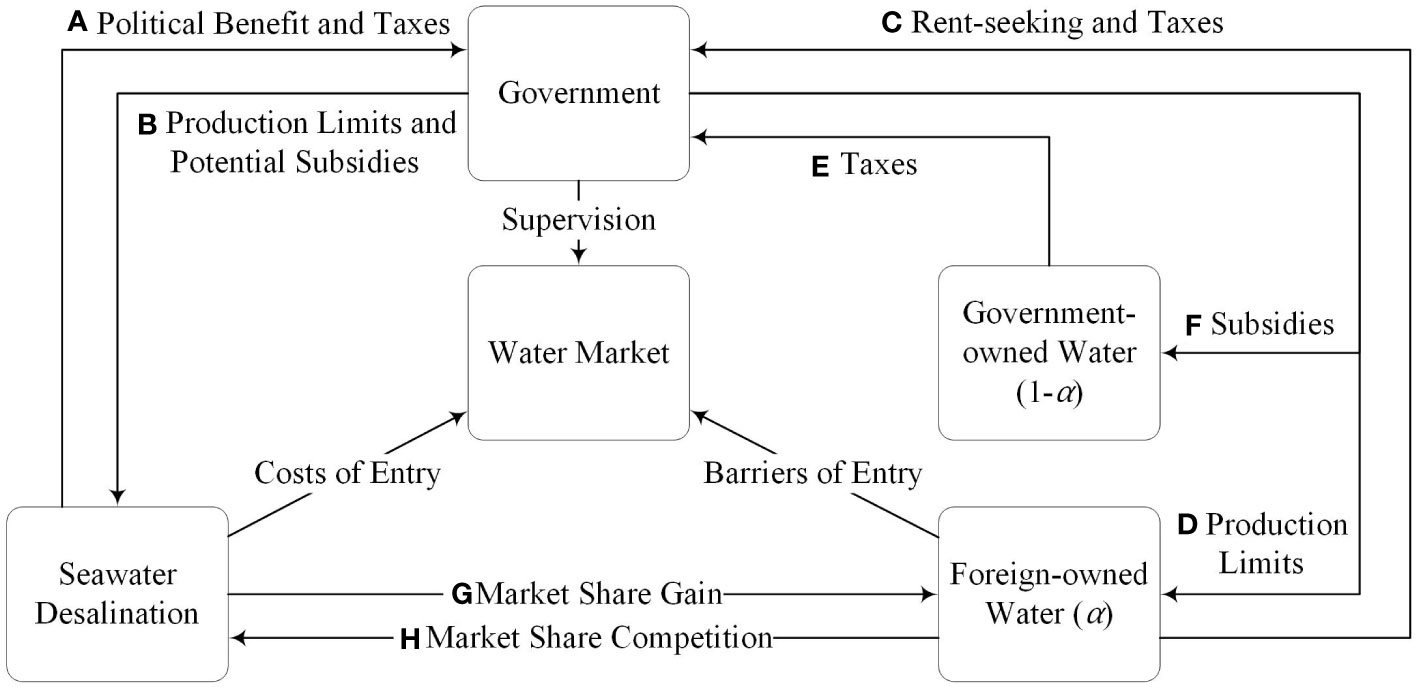
Figure 1 Diagram of the logical relationships in the tripartite evolutionary game model. (A) . (B) . (C) . (D) . (E) . (F) . (G) . (H) .
2.3 Evolutionary strategic stability analysis
2.3.1 Strategic stability analysis of seawater desalination
Assuming that the expected income of seawater desalination entering the market is , the expected income of not entering market is , and the total average expected income is .
The replicator dynamic equation of seawater desalination is as follows:
The first-order derivative of and the supposed are:
According to the stability theory of the differential equation (Zhou et al., 2022), the probability of seawater desalination entering the market in a stable state must satisfy as well as . Since , is a decreasing function with respect to . Therefore when here is , yielding , seawater desalination does not determine a stabilization strategy. When here is , yielding , making an ESS point. When here is , yielding , making an ESS point. The strategic diagram of seawater desalination is (see Figure 2):
The evolutionary phase diagram of the strategy for seawater desalination shows that the probability of entering the market is the volume of , and the probability of not entering the market is the volume of . Noting that it begins at and ends at ():
Inference 1. The probability of seawater desalination entering the market has a negative relationship with the cost of entry and the amount of supervision .
Proof: It can be seen from the integral of that and are both monotonically decreasing functions of , and decreases faster than , therefore making a decreasing function of and a constant with respect to .
Inference 2. The probability of seawater desalination entering the market has a negative relationship with the amount of rent-seeking .
Proof: It is evident that is a decreasing function with respect to while is unaffected by , therefore making a decreasing function of . The decreasing numerator and increasing denominator generally compose a decreasing function of .
2.3.2 Strategic stability analysis of tap water
Assuming that the expected income of tap water rent-seeking is , the expected income of no rent-seeking is , and the total average expected income is .
The replicator dynamic equation of tap water is as follows:
The first-order derivative of and the supposed are:
According to the stability theory of the differential equation, the probability of tap water rent-seeking in a stable state must satisfy as well as . Since , is an increasing function with respect to . Therefore when there is , yielding , tap water does not determine a stabilization strategy. When there is , yielding , making an ESS point. When there is , yielding , making an ESS point. The strategic diagram of tap water is (see Figure 3).
The evolutionary phase diagram of the strategy for tap water shows that the probability of rent-seeking is the volume of , and the probability of not entering the market is the volume of , noting that it ends at , which are calculated as
Inference 3. The probability of tap water rent-seeking is negatively correlated with the cost of rent-seeking , but it is positively correlated with the amount of rent-seeking .
Proof. When , there is , making it an increasing function of but a decreasing function of . Therefore, the probability of rent-seeking is negatively impacted by , which is positively impacted by and negatively impacted by .
2.3.3 Strategic stability analysis of government
Assuming that the expected income of government strict supervision is , the expected income of loose supervision is , and the total average expected income is .
The replicator dynamic equation of government is as follows:
The first-order derivative of and the supposed are:
According to the stability theory of the differential equation, the probability of government strictly supervising in a stable state must satisfy as well as . Since , is an increasing function with respect to . Therefore when there is , yielding , government does not determine a stabilization strategy. When there is , yielding , making an ESS point. When there is , yielding , making an ESS point. The strategic diagram of government is (see Figure 4).
The evolutionary phase diagram of the strategy for government shows that the probability of strict supervision is the volume of , and the probability of loose supervision is the volume of , which are calculated as (supposing , , )
Inference 4. The probability of government implementing strict supervision has a negative relationship with political relatedness .
Proof. is positively related to and is negatively related to , which are at the positions of numerator and denominator, making the expression overall decreasing with respect to .
Inference 5. The probability of government implementing strict supervision has a negative relationship with the cost of supervision .
Proof. In the expression , is at the numerator position with a negative sign, therefore making it negatively related with the probability of strict supervision .
2.4 Equilibrium stability analysis
The Jacobian matrix of the tripartite evolutionary game system is
Solving these equations generates eight equilibrium points: , , , , , , , (Bjornerstedt and Weibull, 1994). The Jacobian matrix of the tripartite evolutionary game is (Gao et al., 2022a):
Using Lyapunov’s first method (Gao et al., 2022b): if all eigenvalues of the Jacobian matrix have negative real parts, then the equilibrium point is an asymptotically stable point of ESS; if at least one of the eigenvalues of the Jacobian matrix has a positive real part, then the equilibrium point is an unstable point; if except for the eigenvalues whose real part is zero, the other eigenvalues of the Jacobian matrix have negative real parts, then the equilibrium point is in a critical state, and its stability cannot be determined by the sign of the eigenvalues. Equilibrium analysis has revealed the ESS points to be , , and (see Table 3).
3 Simulation analysis
3.1 Analysis of ESS points
3.1.1 ESS point (0,0,0)
With at point (see Figure 5), as the amount of government supervision increases, the probability of seawater desalination entering the market decreases, and the probability of government strict supervision increases. As the political relatedness increases, the probability of seawater desalination entering the market increases, and the probability of government strict supervision decreases. As the probability of government subsidy to seawater desalination changes, there are no significant changes in the strategic probabilities of and .
3.1.2 ESS point (1,0,0)
With at point (see Figure 6), as the amount of government supervision increases, the probability of seawater desalination entering the market increases, and the probability of government strict supervision decreases. As the political relatedness increases, the probability of seawater desalination entering the market decreases, and the probability of government strict supervision increases. As the probability of government subsidy to seawater desalination changes, there are no significant changes in the strategic probabilities of and .
3.1.3 ESS point (1,1,0)
With and at point (see Figure 7), as the amount of government supervision increases, the probability of seawater desalination entering the market increases, and the probability of government strict supervision decreases. As the political relatedness increases, the probability of seawater desalination entering the market decreases, and the probability of government strict supervision increases. As the probability of government subsidy to seawater desalination increases, the probability of seawater desalination entering the market decreases, and the probability of government strict supervision increases.
3.1.4 ESS point (1,0,1)
With and at point (see Figure 8), as the amount of government supervision increases, the probability of seawater desalination entering the market decreases, and the probability of government strict supervision increases. As the political relatedness increases, the probability of seawater desalination entering the market decreases, and the probability of government strict supervision increases. As the probability of government subsidy to seawater desalination increases, the probability of seawater desalination entering the market decreases, and the probability of government strict supervision increases. This shows that after entering the market and meeting strict supervision, the effect of government subsidies to seawater desalination is no longer significant.
3.2 Effect of parameters
3.2.1 Effect of government supervision
To analyze the effect of government supervision , consider and start at (see Figure 9). At first when the parameter stays at 50, the probability of seawater desalination entering the market soon plummets to zero in 0.1 . As lowers to 40, the probability of seawater desalination entering the market stays between 0.2 and 0.3. As lowers to 25, rises to 1.0 within 0.1 .
3.2.2 Effect of entry cost
To analyze the effect of entry cost , consider and start at (see Figure 10). At first when the parameter stays at 1050, the probability of seawater desalination entering the market soon plummets to zero in 0.1 . As lowers to 1000, the probability of seawater desalination entering the market stays slightly above 0.2. As lowers to 950, rises to 1.0 within 0.1 .
3.2.3 Effect of political relatedness
To analyze the effect of political relatedness , consider and start at (see Figure 11). At first when the parameter stays at 1.0, the probability of seawater desalination entering the market soon plummets to zero in 0.1 . As rises to 2.0, the probability of seawater desalination entering the market stays slightly above 0.1. As rises to 3.0, rises to 1.0 within 0.1 .
3.3 Evolution analysis
According to Zou et al. (2022), using different initial strategies within the range of [0,1], four groups of data are randomly combined and evolve 50 times with the change over time. The operation results of arrays are shown in Figure 12, respectively.
Under condition , strategic combinations quickly evolve into . Under conditions and , strategic combinations are quick to converge at . Under conditions and , the strategic combinations end at . Finally, under conditions and , strategic combinations first aggregate to and then converge at .
4 Results and discussion
4.1 Results
By specifying three major parties in the seawater desalination industry and proposing hypotheses about their behaviors, a tripartite evolutionary game analysis based on real industrial data is performed. Through model inferences, the probability of seawater desalination entering the market is found to have a negative relationship with the cost of entry, the amount of government supervision, and the amount of rent-seeking of foreign-owned water companies. The probability of tap water rent-seeking is negatively correlated with the cost of rent-seeking, but positively correlated with the amount of rent-seeking. The probability of government implementing strict supervision has a negative relationship with political relatedness and the cost of supervision. According to Lyapunov’s first method, a total of four ESS points, including (0,0,0), (1,0,0), (1,1,0) and (1,0,1) are specified under various conditions. As the probability of government subsidy to seawater desalination changes, there are no significant changes in the strategic probabilities of desalination entering market or government strict supervision. Evolution analyses from diverse beginning points reveal that solutions are quick to converge at (0,0,0), (1,0,0), (1,1,0) and (1,0,1).
Hypothesis 1 is proven because the three players of the game reach an evolutionarily stable state over time. Hypothesis 2 is partially proven because at ESS Point (0,0,0), seawater desalination only chooses to enter the market when government supervision is no greater than 400,000 tons per day. Hypothesis 3 is partially proven since entry cost should be no more than 10 million yuan per day for entry. Hypothesis 4 is partially proven because at ESS Point (1,0,1), tax subsidies are only effective if foreign-owned companies seek rents. Hypothesis 5 is proven because in Inference 2, the probability of seawater desalination entering the market is found to negatively correlate with the amount of rent-seeking of foreign-owned water companies. Hypothesis 6 is partially proven at ESS Point (1,1,0), as the amount of government supervision increases, the probability of seawater desalination entering the market increases.
In this study, under the spirit of government regulation, several barriers of entry for seawater desalination in China are identified. (1) For seawater desalination to enter the market in China, government supervision should be no more than 400,000 tons per day, about 13.8% of total seawater desalination scale. (2) The entry cost should be no more than 10 million yuan per day for seawater desalination, which is equivalent to approximately 18.25 trillion yuan during a five-year period. This result is similar to the 21 billion standard the Chinese government spent in water treatment infrastructure (Parsa, 2021). Finally, (3) political relatedness should be at least 2.0 for seawater desalination to take place, and 3.0 for it to develop in full swing. This means the direct responsible department should be at least as closely related to seawater desalination as the Ministry of Water Resources (MWR). The article also sheds light into the division of state and foreign-owned water companies and argues that government subsidies are only effective if foreign-owned companies seek rents. Currently, China’s desalination scale has not matched the Action Plan’s goal of 2,900,000 t/day, and entry cost is still higher than 10 million yuan/d. Moreover, it is governed by some politically less-relevant departments such as the National Development and Reform Commission (NDRC). To reconcile these issues, the article proposes several measures in the Discussion part.
4.2 Discussion
4.2.1 Top-level design
As delineated in the article, the 2025 goal of 3 million tons of desalinated seawater per day would be unachievable if speed remains the same. To speed up production, based on results of the evolutionary game analysis, several solutions are proposed. This requires the government to realign top designs, both relaxing limitations on seawater desalination and increasing the political relatedness of administrations concerning it.
First, considering , the amount of government supervision must be as low as 400,000 tons per day for seawater desalination to enter market and compete with normal tap water, which requires a total elevation of its status in the government’s strategic plans. China needs to attach greater importance to seawater desalination from a strategic level of water resource security (Ai et al., 2023). The advancement of the desalination sector holds significant implications as a supplementary means of augmenting China’s water resources. The current threshold required for desalinated water to join the water resources market is excessively high, so constraining the supply of desalinated water and impeding the industry’s capacity to respond to developmental needs. Hence, it is imperative for the government to establish a comprehensive policy that mandates the integration of desalinated water into the national water network. This inclusion should be regarded as a strategic measure to augment the existing water supplies, while also ensuring the optimal utilization of the completed desalination facilities. In the context of the water resources market, it is advisable for the government to exercise caution in its level of involvement in market competition behavior. The government, as a significant regulator in the three-party game, ought to establish suitable rules and regulatory safeguards for the water resources market. This entails encouraging competition between desalinated water and tap water firms, while also ensuring the establishment of a robust market competition system that promotes healthy development.
Second, considering , political relatedness of administrative departments with seawater desalination should be at least 2.0 for it to enter market, and higher for it to prosper, which requires a thorough reform of government divisions in terms of reference (Duan et al., 2023). The desalination sector is subject to various administrations due to the intricate nature of the governmental management system. The management of the desalination industry in China is overseen by several government agencies. These include the NDRC, Ministry of Finance (MOF), Ministry of Industry and Information Technology (MIIT), and Ministry of Science and Technology (MOST). The NDRC is responsible for formulating development strategies, while the MOF handles industrial and financial policies. The MIIT focuses on technical equipment development, and the MOST is involved in scientific and technological research and development. Additionally, the Ministry of Natural Resources (MNR) is tasked with controlling and exploiting natural resources, specifically seawater, which is relevant to the desalination process. The Ministry of Ecology and Environment (MOE) is responsible for addressing any ecological pollution issues that may arise during desalination production. Lastly, the MWR is in charge of overseeing the national water resources. The MWR takes the responsibility of coordinating and managing the water resources at a national level. The seawater desalination industry encompasses a comprehensive chain of processes, including seawater extraction, pre-treatment of seawater, treatment through reverse osmosis membrane or distillation, filtration of desalinated water, and release of concentrated water. The process of seawater desalination is a comprehensive undertaking that involves the allocation of government rights, responsibilities, and interests within a structured framework. Additionally, the desalination industrial process is characterized by its intricate nature. There exists a notable discrepancy in various aspects of seawater desalination projects, including project placement, supervision, rights, and obligations, as well as interests. However, these areas have not yet been clearly defined. The adoption of diverse management modes not only results in diminished political significance of government departments and desalination, but also undermines the government’s role as a regulatory authority. Hence, it is imperative to elucidate the rights and obligations of pertinent governmental entities, precisely delineate the primary unit of accountability, establish an inter-departmental and inter-regional coordination and management framework for the advancement of the seawater desalination sector, and harmonize the roles of relevant departments. These measures are essential for facilitating the extensive growth of the seawater desalination industry.
As the simulation results indicate, government supervision, entry cost and political relatedness are the most important tasks for enhancing seawater desalination. Among them (see Figure 13), government supervision (including utilization planning and regulations) is led by the MWR and assisted by NDRC, MNR, MOF and others. Entry cost (industry policies) is most directly related to the NDRC and partly related to MWR, MIIT, MNR and MOF. Based on the concentration of tasks, the most politically related department is the MWR (leading 4 tasks and participating in 2 tasks). To foster a benign environment for seawater desalination to enter, the MWR should collaborate with provincial and municipal subdivisions to craft utilization plans and reasonable regulations. The NDRC, despite politically less related, should also coordinate industry policies to optimize the entry costs. Furthermore, it can be integrated with the current state of China’s political system, which is overseen by the State Council. This involves the establishment of the MWR and the NDRC, along with other relevant government departments, to collectively lead the coordination and management of the seawater desalination industry. This mechanism encompasses various aspects of the industry chain, including industry planning, industry leadership, policies for industrial support, guidance on pricing and resource allocation, and industry supervision. The objective is to streamline government oversight processes and enhance the efficacy of supervision.
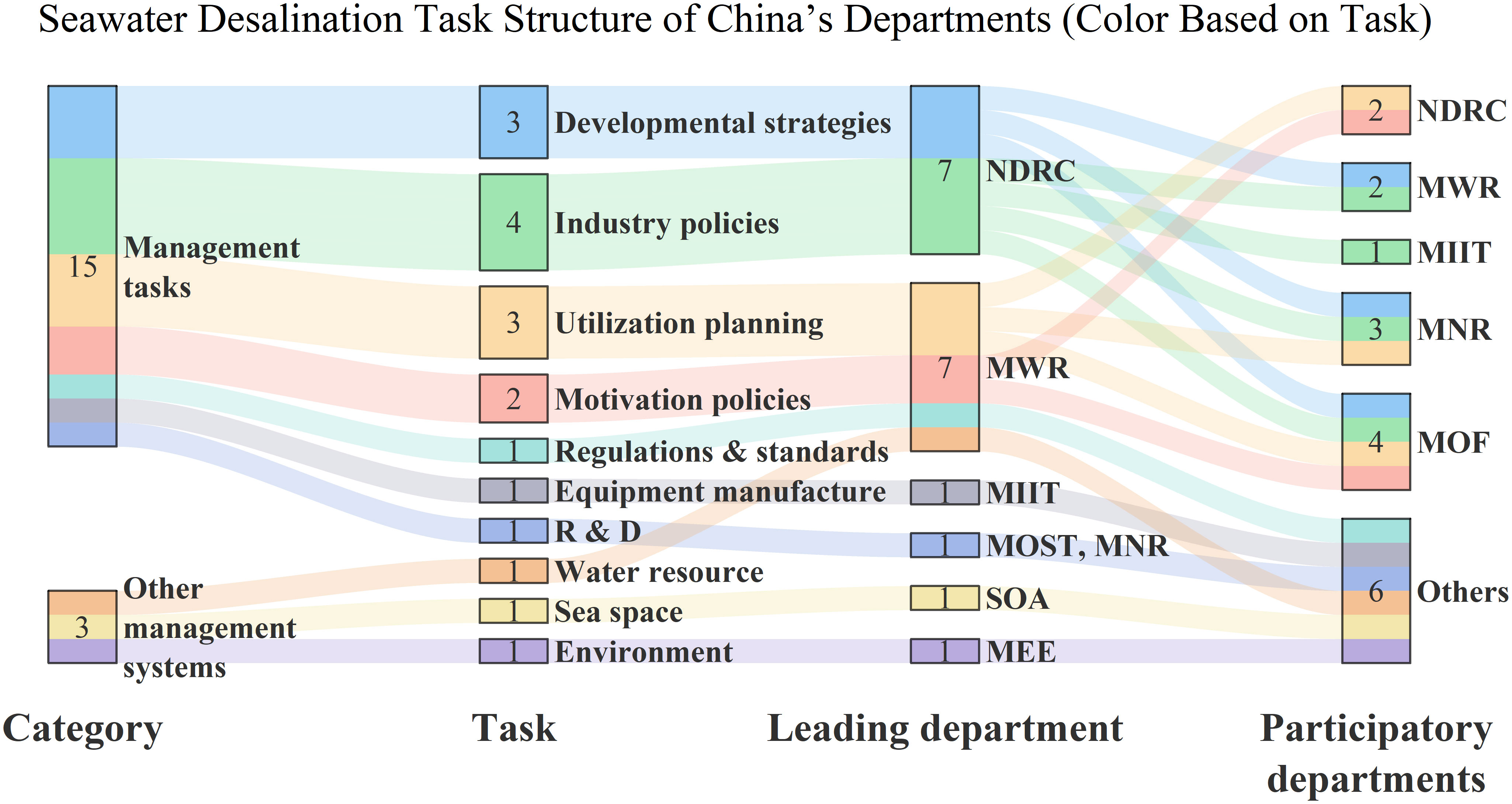
Figure 13 Seawater task structure of China’s departments, collected from official policy files. NDRC, National Development and Reform Commission; MWR, Ministry of Water Resources; MIIT, Ministry of Industry and Information Technology; MOST, Ministry of Science and Technology; MNR, Ministry of Natural Resources; SOA, State Oceanic Administration; MEE, Ministry of Ecology and Environment; MOF, Ministry of Finance.
4.2.2 Implementation for the seawater desalination project
Another major issue concerning the development of seawater desalination is the entry cost. According to game analysis, consider , must be lowered to 1000 to enter market, and 950 to prosper. This equals 10 million yuan per day, identical to the stipulation in the National Twelfth Five-Year Science and Technology Development Plan.
The cost of desalination is significantly influenced by the accessibility of essential technologies and equipment utilized in the process. The reverse osmosis membrane method is responsible for producing approximately 67% of the total volume of desalinated water. However, it is worth noting that the procurement of essential materials and equipment, including reverse osmosis membrane components, energy recovery devices, and high-pressure pumps, heavily relies on imports. The rate of localization is found to be below 50 percent, which is determined by comparing the investment cost of the project equipment (Zhu et al., 2012; Gong et al., 2019). The market share of domestic reverse osmosis membranes is as low as 10 percent (Lin et al., 2021). The limited localization rate of essential technologies and equipment utilized in the production of desalinated water results in elevated entry costs for desalination, hence impeding the progress of the seawater desalination sector. It is also important to acknowledge the associated drawbacks, including the elevated expenses incurred in acquiring membrane materials and the stringent water quality requirements imposed by the characteristics of the raw water source. Hence, it is advisable for the government to provide guidance and support to universities, research institutes, desalinated water enterprises, and other pertinent entities in enhancing their capacity for independent innovation. This includes efforts to enhance the localization rate and technological competitiveness of core desalinated water technology and equipment, as well as key basic raw materials. Additionally, it is crucial to foster the development of a comprehensive desalinated water industry chain.
Furthermore, the use of scientific strategies for clustering and developing industrial parks with high water consumption can effectively leverage the benefits of industrial clustering and minimize the expenses associated with desalinated water transportation and utilization. Efficient utilization of the operational desalination facilities should be prioritized, with a focus on coordinating the planning and implementation of seawater desalination, seawater recycling, and cooling projects. It is advisable to leverage government policy guidance to the greatest extent possible in order to satisfy the water requirements of high water-consuming industrial parks in sectors such as thermal power, chemical, and metallurgy. This approach aims to enhance the potential for industrial applications and expand the utilization of desalinated water, thereby facilitating cost reduction in the desalination process. Currently, an agglomeration of desalination plants under the Seawater Transfer Project should be established on the pattern of South-North Water Transfer Project, especially in coastal cities with highly water-dependent industries such as thermal power, chemical industry, and metallurgy to apply the size-scale effect.
4.2.3 Subsidy policy
Numerous pertinent research findings have demonstrated that the selection of desalinated water in the market has noteworthy consequences influenced by both demand and supply factors (Zou and Liu, 2016). According to the notice from the Ministry of Finance and the State Administration of Taxation, as a benefit of add value products, seawater desalination enterprises enjoy a maximum tax subsidy rate of 7%. However, tax cuts in larger scales especially designed for desalinated water need to be implemented, to further differentiate it from tap water.
The current methodologies employed to ascertain the cost of water are insufficient, leading to a notable disparity between the intrinsic worth of piped water and prevailing pricing mechanisms. The pricing structure for piped water typically excludes the incorporation of government investments and assistance in the establishment of reservoirs, construction of pipeline networks, cross-regional diversions, and water transfers. Government subsidies for the establishment of these water facilities have been implemented for an extended duration and have exhibited an annual upward trend, hence resulting in a reduction in the overall expenses associated with tap water production (Li et al., 2013). Furthermore, tap water, being a crucial strategic resource with implications for national welfare, falls under the purview of the government’s macro-control mechanism. This entails the implementation of various measures, such as financial subsidies, to facilitate the government’s coordination and regulation of tap water prices. In contrast, the present desalination industry functions within a fully market-oriented framework, characterized by a dearth of robust government financial backing and subsidies. Typically, enterprises are compelled to make substantial initial investments in land and equipment for the establishment and functioning of desalination ventures, thereby leading to elevated initial production costs for desalinated water (Duan et al., 2023). While many desalination plants presently employ waste heat from power plants for cogeneration, the comparatively elevated production expenses associated with desalinated water pose challenges in achieving full market competitiveness against tap water, unless supported by government subsidies and suitable tax advantages.
Proposing the implementation of preferential policies, such as investment subsidies or loan interest subsidies, to support the establishment of seawater desalination projects (Lv et al., 2023). Local financial resources can be utilized to offset the disparity in cost between desalinated water and the local municipal water supply. Additionally, the implementation of preferential regulations can ensure that the power rates for desalination firms align with those applicable to residents. Simultaneously, it is recommended that the government enhance its financial assistance, establish funds for industrial growth, and provide support to desalination firms under certain conditions, in order to generate funds through the issuance of stocks, bonds, and other mechanisms. The government progressively directs social forces, private capital, and venture capital to engage in the realm of seawater desalination, thereby contributing to the development and management of engineering facilities. A comprehensive investment and financing policy framework has been developed to enhance the operational and investment landscape of the seawater desalination sector, employing many approaches.
4.2.4 Informal establishment
In addition to the implementation of administrative design, technology advancements, and financial subsidies, it is imperative to enhance the efficacy of publicity efforts and the guiding of public opinion. The general perception of desalination among the public is limited due to its very short period of existence and limited exposure. Consequently, there is a lack of understanding regarding the safety and cleanliness of desalinated water (Yu and Wang, 2022), leading to a relatively low level of public acceptance towards desalinated water. Hence, it is imperative for the government to collaborate with desalination enterprises and leverage media platforms, including newspapers, magazines, and the Internet, to bolster awareness and education. This effort aims to disseminate fundamental knowledge about desalination, foster public acceptance of desalinated water, and cultivate a favorable public opinion environment conducive to the widespread adoption of seawater desalination.
4.2.5 Limitations
One of the primary constraints of this analysis is the omission of the expenses associated with institution development in the context of saltwater desalination, a significant aspect of the Chinese market environment. The study extensively examines the effects of institution factors, such as costs of entrance , government supervision , and political relatedness , due to the challenges associated with quantification and the restricted availability of relevant data. However, the study does not extensively address the construction issue of institutions. Investment in institutions constitutes a significant component of the National Five-Year Science and Technology Development Plans, accounting for a total investment of one billion yuan, which corresponds to around 5% of the overall budget (Wu et al., 2022). There is a need to enhance the factors involved in the establishment of a seawater desalination institution in order to further investigate the interdependent development of technology, strategy, and institution. Furthermore, the criteria utilized in this study primarily originate from policy documents, a significant portion of which are founded on anticipations and directives from higher authorities. Consequently, these parameters may encounter challenges when confronted with real-world circumstances and necessitate additional refinement through the implementation of surveys, investigations, and expert evaluations.
5 Conclusion
Using tripartite evolutionary game analysis including seawater desalination, tap water companies and the government, the study has performed numerical simulation based on market behavior hypotheses and discussed the roles of government regulation. Two hypotheses were proven and four were partially proven, and the most important conditions for seawater desalination development were revealed to be government supervision (≤400,000 t/d), entry cost (≤10 million yuan/d) and political relatedness (≥2.0). Based on an analysis of China’s alluvial diagram of sectoral task structure, it has been determined that the MWR and the NDRC are the most crucial government departments due to their governmental oversight, political significance, and entry cost considerations. Consequently, it is recommended that a collaborative management mechanism be established, led jointly by the MWR and the NDRC, with the active involvement of other pertinent government departments. This initiative aims to improve the effectiveness of governmental governance and facilitate the coordinated development of the desalination industry within the Chinese context. This paper offers recommendations in the domains of high-level planning, implementation of desalination projects, and government subsidy policies, providing guidance for the future advancement of desalination initiatives in China. The study is limited by the exclusion of institutional spending and the absence of data derived from surveys, studies, and expert assessments. The article hopes not only to draw conclusions and suggestions for China, but also for other densely populated and water-stressed countries with strong government regulation to use seawater desalination as an alternative towards a more sustainable future and fulfil the SDGs 6, 7 and 14.
Data availability statement
The original contributions presented in the study are included in the article/supplementary materials, further inquiries can be directed to the corresponding author/s.
Author contributions
MC: Conceptualization, Funding acquisition, Investigation, Methodology, Project administration, Resources, Supervision, Visualization, Writing – original draft, Writing – review & editing. ZX: Data curation, Formal Analysis, Methodology, Software, Visualization, Writing – original draft. YW: Formal Analysis, Investigation, Methodology, Supervision, Visualization, Writing – original draft, Writing – review & editing.
Funding
The author(s) declare financial support was received for the research, authorship, and/or publication of this article. This research was funded by National Natural Science Foundation of China-Macao Science and Technology Development Fund (NSFC-FDCT) Joint Project, No.: 4211101006|0011/2021/AFJ, Southern Marine Science and Engineering Guangdong Laboratory (Zhuhai) 2020 Project, No. SML2020SP002. And this paper also funded by Team fund support of SML.
Acknowledgments
We thank the Marine Conservation and Integrated Governance Interdisciplinary Team (MCIGI) for their support and help, and thank all the scholars for their help in the process of writing the paper. We also gratefully acknowledge reviewers for their valuable time to review this paper.
Conflict of interest
The authors declare that the research was conducted in the absence of any commercial or financial relationships that could be construed as a potential conflict of interest.
Publisher’s note
All claims expressed in this article are solely those of the authors and do not necessarily represent those of their affiliated organizations, or those of the publisher, the editors and the reviewers. Any product that may be evaluated in this article, or claim that may be made by its manufacturer, is not guaranteed or endorsed by the publisher.
References
Ai C., Zhao L., Han M., Liu S., Wang Z. (2022). Mitigating water imbalance between coastal and inland areas through seawater desalination within China. J. Clean. Prod. 371, 133418. doi: 10.1016/j.jclepro.2022.133418
Ai C., Zhao L., Song D., Han M., Shan Q., Liu S. (2023). Identifying greenhouse gas emission reduction potentials through large-scale photovoltaic-driven seawater desalination. Sci. Total Environ. 857, 159402. doi: 10.1016/j.scitotenv.2022.159402
Beijing Municipal Commission of Development & Reform (2015) Introduction to the Functions of the Beijing Municipal Commission of Development & Reform. Available at: http://fgw.beijing.gov.cn/xbsy/en/ (Accessed Jan 1 2023).
Bjornerstedt J., Weibull J. W. (1994). “Nash Equilibrium and Evolution by Imitation,” in Working Paper Series. IUI Working Paper, No. 407, The Research Institute of Industrial Economics (IUI), Stockholm.
Boretti A., Rosa L. (2019). Reassessing the projections of the world water development report. NPJ. Clean. Water 2 (1), 15. doi: 10.1038/s41545-019-0039-9
Chen H., Wang J., Miao Y. (2021). Evolutionary game analysis on the selection of green and low carbon innovation between manufacturing enterprises. Alexandria Eng. J. 60 (2), 2139–2147. doi: 10.1016/J.AEJ.2020.12.015
Chen M. (2012). The complexity of the coastal tidal land property rights and its solutions. J. Ocean U. China (Soc. Sci.) 4, 43–48.
Chen X., Zhang Z., Liu L., Cheng R., Shi L., Zheng X. (2016). RO applications in China: History, current status, and driving forces. Desalination 397, 185–193. doi: 10.1016/j.desal.2016.07.001
Cheng X., Chen L., Sun R., Jing Y. (2019). Identification of regional water resource stress based on water quantity and quality: A case study in a rapid urbanization region of China. J. Clean. Prod. 209, 216–223. doi: 10.1016/j.jclepro.2018.10.175
Ding Y., Zhang S., Xu R., Gao Y., Ding H., Sun P., et al. (2023). The coupling coordination measurement, spatio-temporal differentiation and driving mechanism of urban and rural water poverty in Northwest China. Int. J. Env. Res. Pub. He. 20 (3), 2043. doi: 10.3390/ijerph16091647
Du Y. W., Sun H. R., Wan X. L. (2022). Tripartite supervision mechanism and evolutionary strategies for marine ranching ecological security: Policy tools perspective. Regional Stud. Mar. Sci. 50, 102125. doi: 10.1016/j.rsma.2021.102125
Du Y., Sun H. R., Wang Y., Wan X. (2021). Evolutionary game model and simulation for supervising ecological security of marine ranching. Acta Ecol. Sin. 41 (12), 4795–4805. doi: 10.5846/stxb202002100220
Duan L., Li Y., Gu W., Wang C., Shi Y., Yang H., et al. (2023). General toxicity and genotoxicity studies of a new scale inhibitor for seawater desalination. Env. Sci. Eur. 35 (1), 1–14. doi: 10.1186/s12302-023-00722-7
Eghbali M. A., Rasti-Barzoki M., Safarzadeh S. (2022). A hybrid evolutionary game-theoretic and system dynamics approach for analysis of implementation strategies of green technological innovation under government intervention. Technol. Soc. 70 (March), 102039. doi: 10.1016/j.techsoc.2022.102039
Fairchild R. J. (2008). The manufacturing sector’s environmental motives: A game-theoretic analysis. J. Bus. Ethics 79, 333–344. doi: 10.1007/s10551-007-9401-9
Fritzmann C., Löwenberg J., Wintgens T., Melin T. (2007). State-of-the-art of reverse osmosis desalination. Desalination 216 (1-3), 1–76. doi: 10.1016/j.desal.2014.10.039
Gao L., Yan A., Yin Q. (2022a). An evolutionary game study of environmental regulation strategies for marine ecological governance in China. Front. Mar. Sci. 2428. doi: 10.3389/fmars.2022.1048034
Gao L., Yan A., Yin Q. (2022b). Marine ecological governance under new media environment: tripartite evolutionary game and simulation analysis. Front. Env. Sci. 10. doi: 10.3389/fenvs.2022.941247
Gao L., Yoshikawa S., Iseri Y., Fujimori S., Kanae S. (2017). An economic assessment of the global potential for seawater desalination to 2050. Water 9 (10), 763. doi: 10.3390/w9100763
Geall S., Ely A. (2018). Narratives and pathways towards an ecological civilization in contemporary China. China Quart. 236, 1175–1196. doi: 10.1017/s0305741018001315
Ghaffour N., Missimer T. M., Amy G. L. (2013). Technical review and evaluation of the economics of water desalination: Current and future challenges for better water supply sustainability. Desalination 309, 197–207. doi: 10.1016/j.desal.2012.10.015
Gong S., Wang H., Zhu Z., Bai Q., Wang C. (2019). Comprehensive utilization of seawater in China: A description of the present situation, restrictive factors and potential countermeasures. Water 11 (2), 397. doi: 10.3390/w11020397
Lee S. (2021). “Water and wastewater service market,” in China's Water Resources Management: A Long March to Sustainability, 293–335. Germany: Springer International Publishing. doi: 10.1007/978-3-030-78779-0_8
Li X., Cao C., Zhang F. (2021). Evolutionary simulation of medical products export safety supervision considering regulation of importing country. J. Sys. Simu. 33 (9), 2252–2260. doi: 10.16182/j.issn1004731x.joss.20-0408
Li J.-F., Gu A.-L., Ma Z.-Y., Zhang C.-L., Sun Z.-Q. (2019). Economic development, energy demand, and carbon emission prospects of China's provinces during the 14th Five-Year Plan period: Application of CMRCGE model. Adv. Clim. Change Res. 10 (3), 165–173. doi: 10.1016/j.accre.2019.09.003
Li D., Yu H., Liu K. (2013). Solution of excess production capacity of desalination based on demand-oriented policy. Sci. Technol. Dev. 4, 26–30. doi: 10.1016/j.desal.2012.07.022
Lin S., Zhao H., Zhu L., He T., Chen S., Gao C., et al. (2021). Seawater desalination technology and engineering in China: A review. Desalination 498, 114728. doi: 10.1016/j.desal.2020.114728
Liu B., Liu W., Hu W. (2010). Techno-economic analysis and selection for the desalination in power plant. Ind. Safe. Env. Prot. 2, 24–26.
Lv J., Wang Y., Chen H., Li W., Pan P., Wu L., et al. (2023). Thermodynamic and economic analysis of a conceptual system combining medical waste plasma gasification, SOFC, sludge gasification, supercritical CO2 cycle, and desalination. Energy 282, 128866. doi: 10.1016/j.energy.2023.128866
Ministry of Finance and the State Administration of Taxation (2009) Notice of the Ministry of Finance and the State Administration of Taxation on the Application of Low Value Added Tax Rates and Policies on Collecting Value Added Tax by the Simple Approach to Some Goods. Available at: http://www.lawinfochina.com/display.aspx?lib=law&id=7402&CGid (Accessed Jan 1 2023).
Ministry of Natural Resources, N.D.a.R.C (2021) Action Plan for the Desalinisation and Utilisation of Seawater, (2021-2025) - China Water Risk. Available at: https://www.Chinawaterrisk.org/regulation/action-plan-for-the-desalinisation-and-utilisation-of-seawater-2021-2025/ (Accessed Jan 3 2023).
National Development and Reform Commission (2021) Measures for the Administration of Urban Water Supply Prices. | UNEP Law and Environment Assistance Platform. Available at: https://leap.unep.org/countries/cn/national-legislation/measures-administration-urban-water-supply-prices (Accessed Jan 3 2023).
Ouyang R., Mu E., Yu Y., Chen Y., Hu J., Tong H., et al. (2022). Assessing the effectiveness and function of the water resources tax policy pilot in China. Environment Dev. Sustain, 1–17. doi: 10.1007/s10668-022-02667-y
Papapetrou M., Cipollina A., La Commare U., Micale G., Zaragoza G., Kosmadakis G. (2017). Assessment of methodologies and data used to calculate desalination costs. Desalination 419, 8–19. doi: 10.1016/j.desal.2017.05.038
Parsa S. M. (2021). Reliability of thermal desalination (solar stills) for water/wastewater treatment in light of COVID-19 (novel coronavirus “SARS-CoV-2”) pandemic: What should consider? Desalination 512, 115106. doi: 10.1016/j.desal.2021.115106
Piao S., Ciais P., Huang Y., Shen Z., Peng S., Li J., et al. (2010). The impacts of climate change on water resources and agriculture in China. Nature 467 (7311), 43–51. doi: 10.1038/nature09364
Qu Y., Zhang N., Xie C. (2011). “Pricing of water resources based on consumption pattern-taking water resources of the south-to-north water transfer project as a case,” in 2011 International Conference on Management and service science: IEEE, IEEE Aug. 12-14, 2011, Wuhan, China. 1–4. doi: 10.1109/ICMSS.2011.5998822
Quan J., Zhou Y., Wang X. (2020). Review on evolution of cooperation in social dilemma games complex systems and complexity science. Complex Syst. Complex. Sci 17, 1, 1–14. doi: 10.13306/j.1672-3813.2020.01.001
Ruan G., Wang M., An Z., Xu G., Ge Y., Zhao H. (2021). Progress and perspectives of desalination in China. Membr 11 (3), 206. doi: 10.3390/membranes11030206
Shelare S., Kumar R., Gajbhiye T., Kanchan S. (2023). Role of geothermal energy in sustainable water desalination—A review on current status, parameters, and challenges. Energies 16 (6), 2901. doi: 10.3390/en15239058
Smith J. M., Price G. R. (1973). The logic of animal conflict. Nature 246 (5427), 15–18. doi: 10.1038/246015a0
Sohrabi M. K., Azgomi H. (2020). A survey on the combined use of optimization methods and game theory. Arch. Comput. Method E. 27 (1), 59–80. doi: 10.1007/s11831-018-9300-5
State Taxation Administration of the People's Republic of China (2009) Detailed Rules for the Implementation of the Interim Regulations of the People's Republic of China on Value-added Taxes. Available at: http://www.lawinfoChina.com/display.aspx?lib=law&id=632&CGid (Accessed Jan 3 2023).
Taylor P. D., Jonker L. B. (1978). Evolutionary stable strategies and game dynamics. Math. Biosci. 40 (1-2), 145–156. doi: 10.1016/0025-5564(78)90077-9
Wan X., Xiao S., Li Q., Du Y. (2021). Evolutionary policy of trading of blue carbon produced by marine ranching with media participation and government supervision. Mar. Policy 124, 104302. doi: 10.1016/j.marpol.2020.104302
Wu B., Zeng H., Ma Z., Gou S., Liu J., Wang J., et al. (2022). Methods to improve management indicators to ensure the implementation of new water governance in China. Adv. Wat. Sci. 33 (4), 553–566. doi: 10.1007/978-981-15-4894-9_18
Xie P., Sun F., Wang L., Liu P. (2019). A review on China's Energy Storage Industry under the “Internet Plus“ initiative. Int. J. Energy Res. 43 (2), 717–741. doi: 10.1002/er.4234
Yang H., Song Z., Liu T., Li Y. (2021). Development status and application analysis of seawater desalination industry in Hebei Province. J. Hebei. U. Wat. Res. Electr. E. 31 (4), 44–49. doi: 10.16046/j.cnki.issn2096-5680.2021.04.007
Yu J., Wang Y. (2022). Policies on seawater desalination and water security in China: Evolution, challenges and recommendations for the future. J. Clean. Prod. 336, 130415. doi: 10.1016/j.jclepro.2022.130415
Zhang Y., Wang R., Huang P., Wang X., Wang S. (2020). Risk evaluation of large-scale seawater desalination projects based on an integrated fuzzy comprehensive evaluation and analytic hierarchy process method. Desalination 478, 114286. doi: 10.1016/j.desal.2019.114286
Zhao J. (2020). Productivity change in the privatized water sector in China, (1999–2006). J. Prod. Anal. 53 (2), 227–241. doi: 10.1007/s11123-019-00572-7
Zhou K., Wang Q., Tang J. (2022). Evolutionary game analysis of environmental pollution control under the government regulation. Sci. Rep. 12 (1), 1–16. doi: 10.1038/s41598-021-04458-3
Zhu Z., Peng D., Wang H. (2019). Seawater desalination in China: an overview. J. Water Reuse. Desalination 9 (2), 115–132. doi: 10.2166/wrd.2018.034
Zhu Q., Shi X., Zhan H., Jiang H. (2012). Seawater utilization in China: current situation, issue and development strategy. China Wat. Res. 21, 30–33.
Zou B., Ju C., Bao F., Lai Y., Xu C., Zhu Y. (2022). Exploring an efficient evolutionary game model for the government–enterprise–public during the double carbon policy in China. Int. J. Env. Res. Pub. He. 19 (8), 4607. doi: 10.3390/ijerph19084607
Keywords: barriers to entry, evolutionary game, government regulation, numerical simulation, seawater desalination
Citation: Chen M, Xu Z and Wang Y (2023) Entry barriers and tripartite evolutionary game analysis of seawater desalination under the government regulation in China. Front. Mar. Sci. 10:1309515. doi: 10.3389/fmars.2023.1309515
Received: 08 October 2023; Accepted: 30 November 2023;
Published: 20 December 2023.
Edited by:
Iván Sola, University of Alicante, SpainReviewed by:
Yen-Chiang Chang, Dalian Maritime University, ChinaNitin Agarwala, National Maritime Foundation, India
Copyright © 2023 Chen, Xu and Wang. This is an open-access article distributed under the terms of the Creative Commons Attribution License (CC BY). The use, distribution or reproduction in other forums is permitted, provided the original author(s) and the copyright owner(s) are credited and that the original publication in this journal is cited, in accordance with accepted academic practice. No use, distribution or reproduction is permitted which does not comply with these terms.
*Correspondence: Mingbao Chen, bWJjaGVuMjAxNkBob3RtYWlsLmNvbQ==
 Mingbao Chen
Mingbao Chen Zhibin Xu
Zhibin Xu Yuhao Wang
Yuhao Wang
